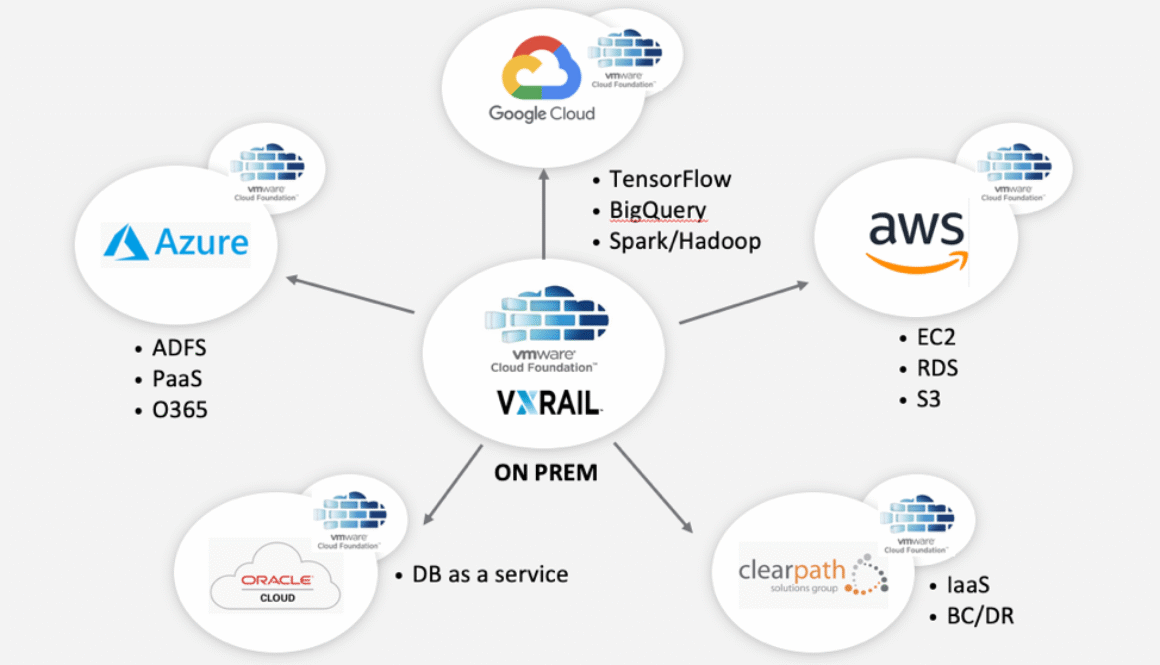Introduction to VMware Cloud Foundation (VCF)
1. What is VMware Cloud Foundation (VCF)?
VMware Cloud Foundation is VMware’s flagship hybrid cloud platform that integrates compute, storage, networking, and cloud management into a single platform. It simplifies the deployment and operation of a Software-Defined Data Center (SDDC) by automating lifecycle management and providing a consistent infrastructure across private and public clouds.
2. Core Objectives of VCF
- Reduce Complexity: Automates deployment and lifecycle management.
- Accelerate Cloud Adoption: Provides a unified platform for hybrid and multi-cloud environments.
- Align IT with Business Goals: Enables agility, scalability, and cost-efficiency.
3. Key Components of VCF
| Component | Description |
|---|---|
| vSphere | VMware’s virtualization platform for compute resources. |
| vCenter | Centralized management for vSphere environments. |
| vSAN | Software-defined storage integrated with vSphere. |
| NSX | Software-defined networking and security platform. |
| SDDC Manager | Automates deployment, configuration, and lifecycle management of the entire stack. |
| Cloud Builder | Tool used to install and configure the initial VCF environment. |
| HCX (Hybrid Cloud Extension) | Enables seamless, zero-downtime migration of workloads to the cloud. |
| vRealize Suite | Cloud management tools for automation, operations, logging, and business insights. |
| vRealize Network Insight | Provides visibility into network traffic and application dependencies. |
| AppDefense | Monitors application behavior and detects anomalies to prevent threats. |
| Horizon | Platform for virtual desktops and applications. |
| VMware PKS (now Tanzu) | Kubernetes management and orchestration platform. |
4. Challenges Without VCF
- Each component is a standalone product with its own lifecycle.
- Integration and compatibility issues can lead to long setup times and potential outages.
- Manual configuration requires deep expertise and constant reference to VMware’s Interoperability Matrix.
5. VMware Validated Designs (VVDs)
- Blueprints for building and operating a VMware SDDC.
- Include detailed documentation for architecture, deployment, and operations.
- Ensure best practices and interoperability across the stack.
- VCF builds on VVDs by automating their implementation.
6. Benefits of VMware Cloud Foundation
- Unified Platform: Consistent infrastructure across clouds.
- Operational Efficiency: Automated lifecycle management.
- Security: Integrated security across all layers.
- Scalability: Easily scale infrastructure as needed.
- Faster Time to Value: Rapid deployment and simplified operations.
7. Use Cases
- Private Cloud Modernization
- Hybrid Cloud Deployments
- Disaster Recovery
- Application Modernization with Kubernetes
- Virtual Desktop Infrastructure (VDI)
8. Summary
VMware Cloud Foundation is a comprehensive solution that brings together all the essential components of a modern data center into a single, integrated platform. It reduces complexity, enhances agility, and supports digital transformation initiatives by enabling a consistent and secure hybrid cloud infrastructure.
